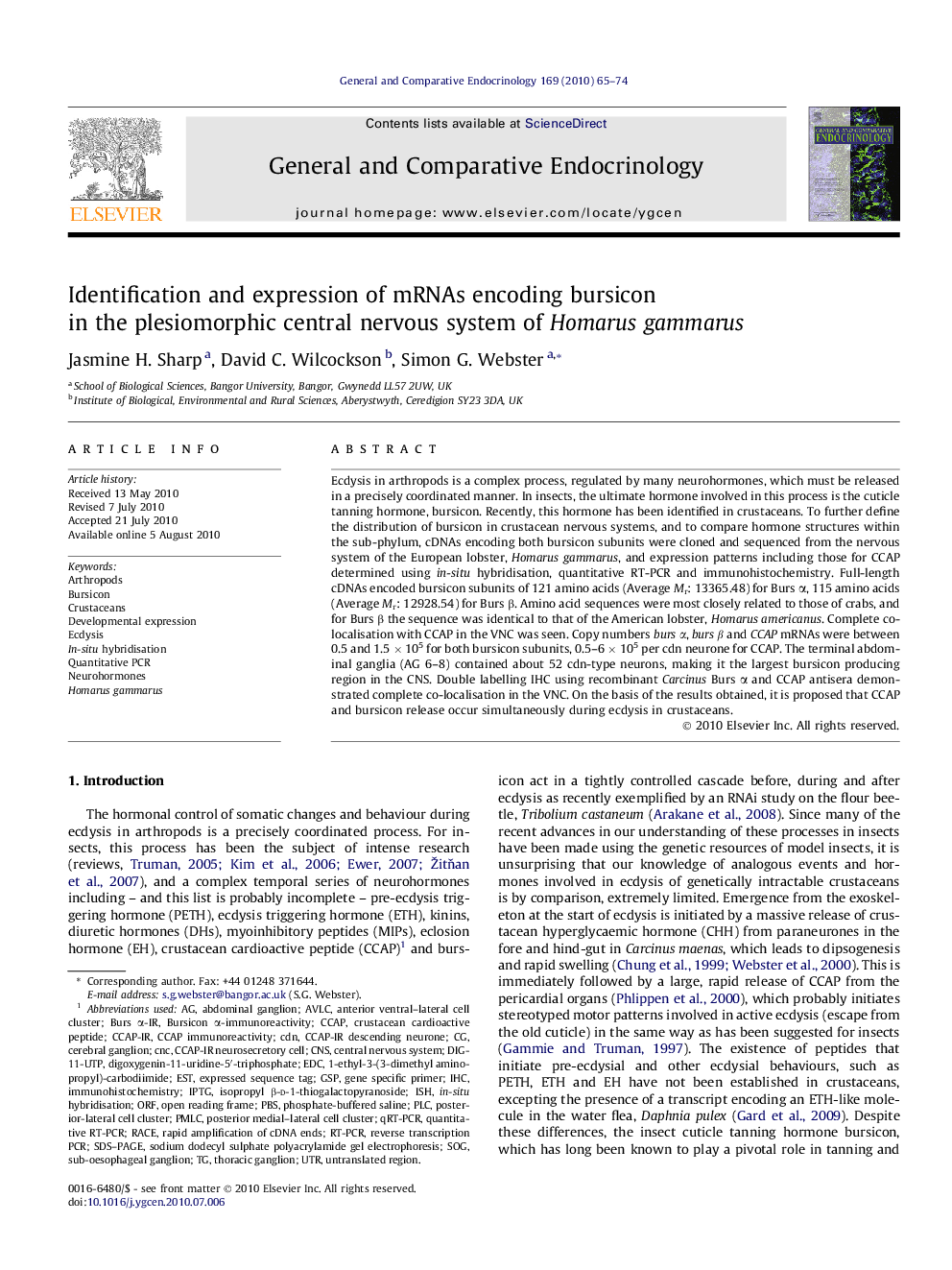| Article ID | Journal | Published Year | Pages | File Type |
|---|---|---|---|---|
| 2801187 | General and Comparative Endocrinology | 2010 | 10 Pages |
Ecdysis in arthropods is a complex process, regulated by many neurohormones, which must be released in a precisely coordinated manner. In insects, the ultimate hormone involved in this process is the cuticle tanning hormone, bursicon. Recently, this hormone has been identified in crustaceans. To further define the distribution of bursicon in crustacean nervous systems, and to compare hormone structures within the sub-phylum, cDNAs encoding both bursicon subunits were cloned and sequenced from the nervous system of the European lobster, Homarus gammarus, and expression patterns including those for CCAP determined using in-situ hybridisation, quantitative RT-PCR and immunohistochemistry. Full-length cDNAs encoded bursicon subunits of 121 amino acids (Average Mr: 13365.48) for Burs α, 115 amino acids (Average Mr: 12928.54) for Burs β. Amino acid sequences were most closely related to those of crabs, and for Burs β the sequence was identical to that of the American lobster, Homarus americanus. Complete co-localisation with CCAP in the VNC was seen. Copy numbers burs α, burs β and CCAP mRNAs were between 0.5 and 1.5 × 105 for both bursicon subunits, 0.5–6 × 105 per cdn neurone for CCAP. The terminal abdominal ganglia (AG 6–8) contained about 52 cdn-type neurons, making it the largest bursicon producing region in the CNS. Double labelling IHC using recombinant Carcinus Burs α and CCAP antisera demonstrated complete co-localisation in the VNC. On the basis of the results obtained, it is proposed that CCAP and bursicon release occur simultaneously during ecdysis in crustaceans.
Research highlights► Insect cuticle tanning hormone coding subunits were cloned and sequenced in Homarus gammarus. ► Bursicon and CCAP expression in the CNS was studied by ISH, ICC, qRTPCR. ► Unlike insects, in lobsters all neurons expressing bursicon also express CCAP. ► The results suggest that bursicon and CCAP are co-released in crustaceans, unlike insects.
